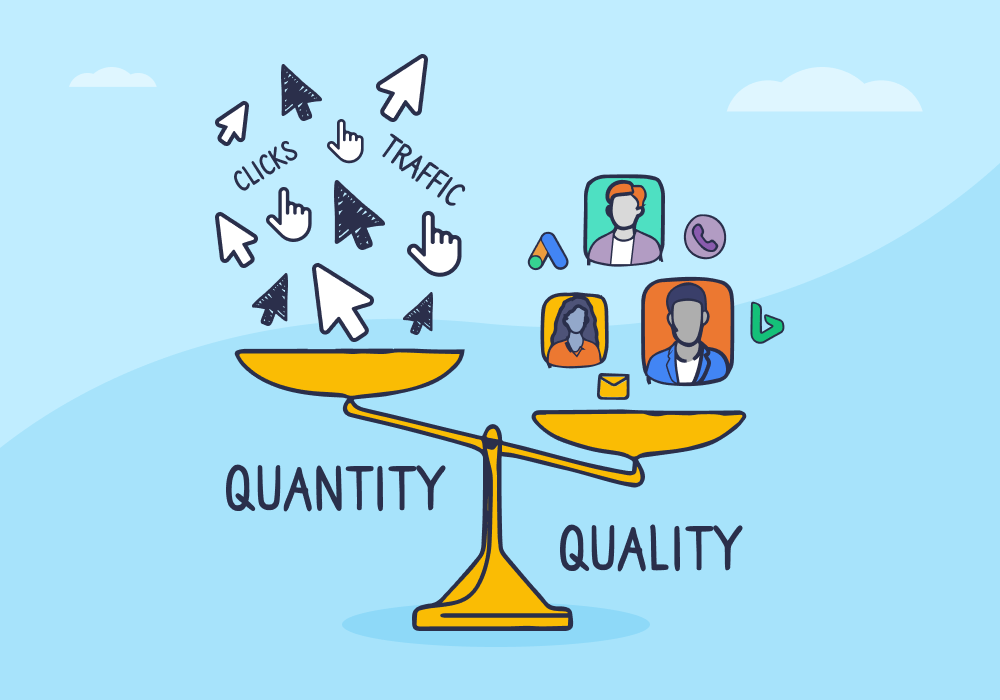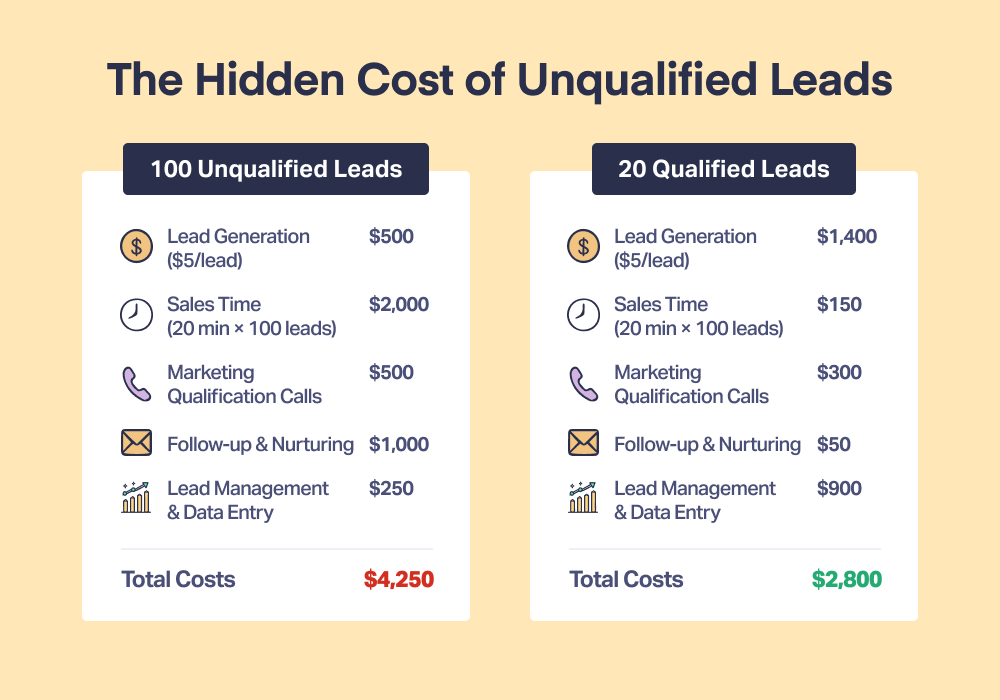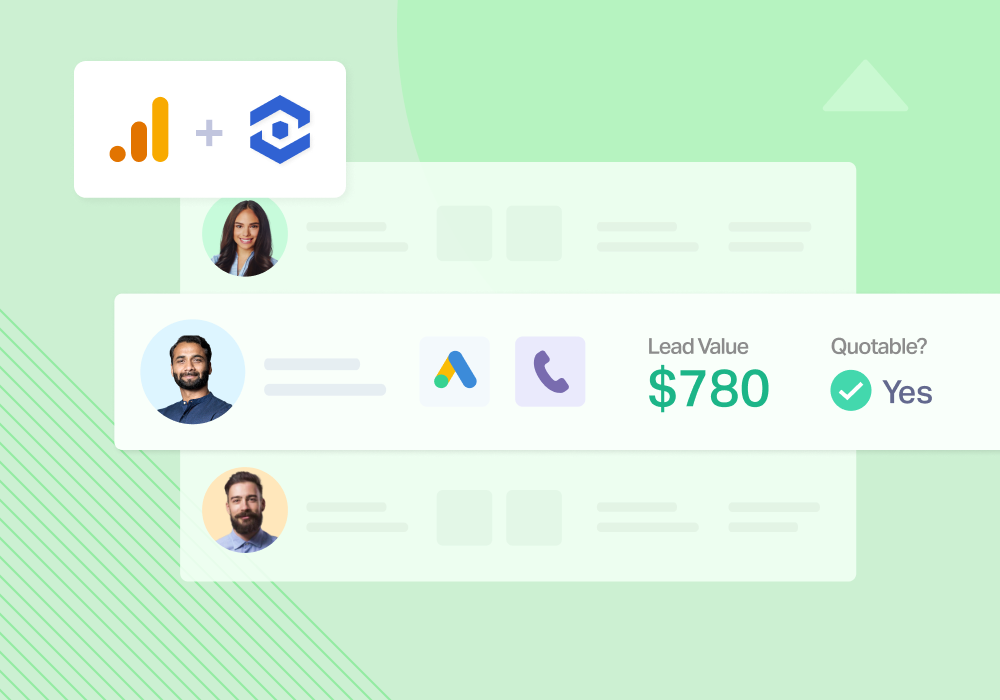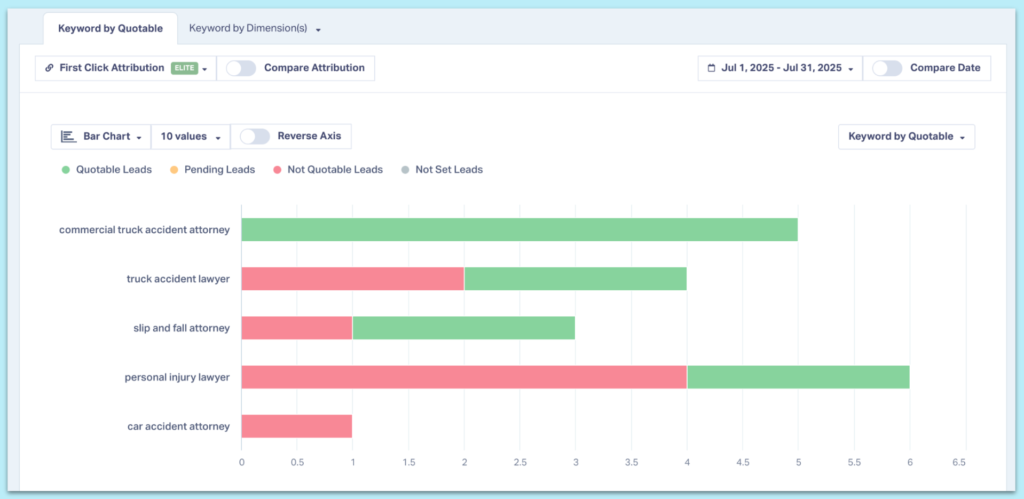
Your marketing dashboard looks impressive:
- 847 leads generated last month
- Cost per lead down to $12
- Conversion rates holding steady at 8%.
By all traditional metrics, your lead generation campaigns are crushing it.
But when you check in with sales, the story changes. "Most of these leads are garbage," your sales manager tells you. "We're spending more time qualifying our prospects than closing deals. Fifty percent don't have budget, another 30% are just people doing research, and the rest are tire-kickers comparing prices."
Sound familiar? You're not alone. Most lead generation tactics prioritize volume over quality, creating an expensive illusion of success while actually wasting resources on prospects who'll never become customers.
The most successful companies optimize lead generation tactics for qualification, not just volume. The result isn't just better ROI—it's dramatically better ROI, because every marketing dollar focuses on attracting prospects who are actually ready to buy.
Read More: The Quantity → Quality Shift: Agency Boosts Quality Calls and Conversion Rates by 30%
The Volume vs. Quality Problem in Lead Generation
The appeal of high-volume lead generation is obvious. More leads feel like more opportunities, and cheaper cost-per-lead metrics look great in reports. But this approach creates hidden costs that often exceed the savings.
When you prioritize volume, you inevitably attract prospects who aren't ready to buy. These unqualified leads consume sales resources at every stage: initial qualification calls, follow-up sequences, CRM management, and opportunity cost from time not spent on qualified prospects.
Consider the math: 100 unqualified leads at $5 each might seem like a bargain compared to 20 qualified leads at $70 each. But when you factor in sales time ($2,000), follow-up costs ($1,000), qualification calls ($500), and lead management ($250), those "cheap" leads actually cost $42.50 each and generate zero revenue.
Meanwhile, the 20 qualified leads cost $140.00 each after hidden costs but generate $2,000 in revenue per lead. The expensive leads deliver 14x better ROI than the cheap ones.
The Continuing Costs of Poor Optimization
Looking at our example, you’ve already wasted $4,250 chasing unqualified leads. But that’s not your only loss—when you aren’t training your Google Ads algorithm to optimize for qualified leads, you’re tacitly encouraging it to chase more of those unqualified leads you already wasted money on.
Working with its own data, Google’s bidding algorithm believes that all 120 of these leads were successes—after all, they were all successful click conversions from your paid ads, and that’s all Google can see. Unless you give it information about which 20 of these leads were actually valuable, the algorithm will actually prioritize bidding on the keywords that brought in all of those junk leads, just as much as it prioritizes the keywords that brought in real customers. So you’re not just losing that $4,250—you’re losing thousands of dollars each and every month.
How WhatConverts Breaks the Unqualified Lead Cycle
This escalating cycle of poor optimization stems from a fundamental measurement problem: most lead generation tools can track volume metrics but can't connect leads to actual business outcomes.
WhatConverts breaks this cycle by tracking the complete lead journey from initial source through qualification to final sales outcome. When prospects become paying customers, you can connect that revenue back to the original marketing tactic that generated them, giving you the missing piece needed for quality-focused optimization.
How It Works
Let's say you're running three main lead generation campaigns with ads pointing to three landing pages: a free estimate for your client's service, a discount on a monthly service package, and an offer for 6 months of no-interest financing. Traditional analytics might show:
- Free estimate campaign: 150 leads at $8 cost per lead
- Monthly package discount campaign: 45 leads at $22 cost per lead
- No-interest financing campaign: 30 leads at $35 cost per lead
Based on volume and cost metrics, you'd want to increase budget on the free estimate campaign since it's generating the most leads at the lowest cost.
What WhatConverts Reveals
WhatConverts tracks each lead back to its original source and lets you see what happened next. When prospects from your no-interest financing campaign became paying customers worth $15,000 and $8,000, you can connect those sales back to the original "expensive" leads.
For your free estimate campaign, WhatConverts shows you that those 150 leads included mostly low-intent researchers and competitors gathering intelligence—prospects who consumed your content but were never going to buy.
In other words:
- Free estimate campaign: 150 leads = $2,500 in sales value (2 small deals)
- Monthly package discount campaign: 45 leads = $67,000 in sales value (6 medium deals)
- No-interest financing campaign: 30 leads = $115,000 in sales value (8 high-value deals)
That’s right: your cheapest cost-per-lead campaign generated the lowest sales value, while your most expensive campaign brought in 46x more revenue. Without this visibility, you would have increased budget on your worst-performing campaign.
Lead Generation Tactics that Prioritize Quality
While qualified leads often come from higher-cost conversions, the fact that a conversion is expensive doesn't automatically mean it's qualified. The examples we've shown might suggest that marketers should simply target expensive lead sources, but cost and quality aren't the same thing—you could easily end up paying premium prices for prospects that are just as unqualified as the cheaper ones.
What you actually need to do is use lead quality data to systematically identify and scale the tactics that are already working. Once you can track which leads actually become customers, patterns emerge that enable you to generate more qualified prospects by design—regardless of whether those sources are expensive or affordable.
Track Attribution for Each Individual Lead Conversion
It’s impossible to optimize for quality without attributing each and every lead to its marketing source. WhatConverts automatically captures the channel, campaign, keyword, and complete customer journey for every lead. When prospects later become customers, you can trace that success back to the specific marketing touchpoint that generated them.
Individual lead attribution is essential because quality patterns only become visible at the granular level. You need to see that Lead #1 came from "truck accident lawyer" and became a $75,000 client, while Lead #2 came from "personal injury information" and never scheduled a consultation.
Identify Your Quality Lead Sources
Once you have attribution data at your disposal, you can analyze your lead database to understand which sources consistently generate prospects who convert to customers. You might discover that LinkedIn campaigns generate fewer total leads than Google Ads, but LinkedIn prospects have 3x higher qualification rates and close at much higher values.
This analysis often reveals counterintuitive insights. Your "worst performing" campaign based on cost-per-lead might actually be generating your most valuable customers, while your highest-volume source attracts mostly tire-kickers.
With WhatConverts, you can generate reports that compare campaigns, keywords, and ads based on how many qualified prospects they generate and how much quote or sales value they bring in:
This allows you to easily visualize which of your marketing efforts are actually achieving your business goals, rather than trying to measure impact based on vanity metrics like clicks and traffic.
Double Down on Proven Quality Characteristics
Once you identify patterns in your qualified leads, you can systematically expand those characteristics across your campaigns. If prospects from certain industries, company sizes, or geographic areas consistently qualify and convert better, adjust your targeting to attract more similar leads.
Content analysis is equally powerful. If prospects who engage with ROI calculators convert at 35% while those who download general white papers convert at 3%, you can shift your content strategy toward tools and resources that naturally attract more qualified prospects.
Scale Successful Tactics While Eliminating Waste
Quality data enables confident budget reallocation. Instead of spreading marketing spend across all tactics based on cost-per-lead, you can concentrate resources on proven quality generators—even if they appear more expensive on surface metrics.
This might mean reducing spend on high-volume, low-quality tactics to invest more heavily in sources that generate fewer leads but higher-value customers. The goal becomes maximizing qualified lead generation rather than total lead generation.
Real-World Impact: How BluePrint Ad Agency Transformed 700+ Monthly Leads
The difference between volume and quality-focused lead generation isn't just theoretical—it creates measurable business impact. BluePrint Ad Agency discovered this firsthand when they shifted from tracking lead quantity to understanding lead quality for their clients.
The Volume Problem
BluePrint's clients were generating impressive lead numbers—over 700 phone calls per month across their campaigns. Traditional call tracking showed them how many leads each marketing channel produced, but once prospects reached their clients' front desks, everything became a black box. Were these leads booking appointments? Were they even qualified prospects, or just information seekers and spam calls?
Without lead quality insights, BluePrint faced an impossible choice: spend dozens of hours each month manually reviewing call recordings to understand lead outcomes, or continue optimizing campaigns based on incomplete volume metrics that might be misleading.
The Quality Solution
Using WhatConverts's Lead Intelligence automation, BluePrint set up simple rules that automatically qualified leads based on conversation content. When prospects mentioned keywords like "appointment," "consultation," or "schedule" during calls, the system automatically tagged them as qualified leads who booked appointments.
The Transformative Results
This quality-focused approach revealed dramatic differences between marketing channels that looked similar based on volume alone. Some channels that generated fewer total calls actually produced far more qualified appointments, while high-volume sources were attracting mostly unqualified prospects.
BluePrint could now show clients exactly which marketing investments were generating actual business outcomes—not just phone rings. They discovered why leads weren't converting (wrong service area, price concerns, timing issues) and used these insights to optimize campaigns for quality rather than quantity.
The business impact was immediate: the agency saved over 52 hours per month that would have been spent manually qualifying leads, while providing clients with actionable insights about lead quality by source. Instead of reporting "Your Google Ads generated 45 calls this month," they could report "Your Google Ads generated 45 calls, with 32 booking appointments and 13 not converting due to price concerns."
This case demonstrates the compound value of quality-focused measurement: better optimization decisions, more efficient resource allocation, and dramatically improved client outcomes—all stemming from understanding lead quality rather than just lead volume.
Read the Full Case Study: AI Saves Agency 52 Hours/mo by Qualifying 700+ Leads Instantly
Building a Quality-Focused Lead Generation System
The shift from volume to quality-focused lead generation isn't a one-time optimization—it's an ongoing system that compounds results over time:
- Start with measurement infrastructure. You can't optimize for quality without tracking it consistently. Implement comprehensive lead attribution that connects every prospect to their original source and tracks outcomes through to sales completion.
- Define your qualification criteria clearly. Establish specific parameters for what constitutes a qualified prospect—budget range, timeline, decision-making authority, pain points. This definition should guide both your tactic selection and measurement approach.
- Embrace higher cost-per-lead when it delivers better ROI. The most successful companies recognize that paying $140 for a lead worth $2,000 in revenue is infinitely better than paying $42 for a lead worth $0.
- Create feedback loops for continuous improvement. Use quality data to systematically test and refine your approach. Each optimization cycle should help you attract more qualified prospects while eliminating sources of unqualified leads.
The long-term benefits extend far beyond marketing metrics. Quality-focused lead generation typically results in shorter sales cycles, higher close rates, and better customer lifetime value because you're attracting prospects who are genuinely good fits for your solution.
Most importantly, this approach scales efficiently. While competitors struggle with increasing volumes of unqualified leads, you're building a lean, profitable system that generates consistent revenue growth through better prospect quality rather than higher prospect volume.
Ready to shift to a quality-focused lead generation strategy? Start your free trial today.
Get a FREE presentation of WhatConverts
One of our marketing experts will give you a full presentation of how WhatConverts can help you grow your business.
Schedule a Demo
Grow your business with WhatConverts








